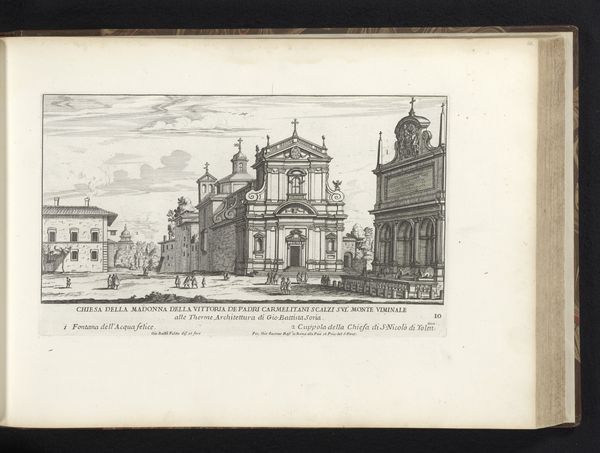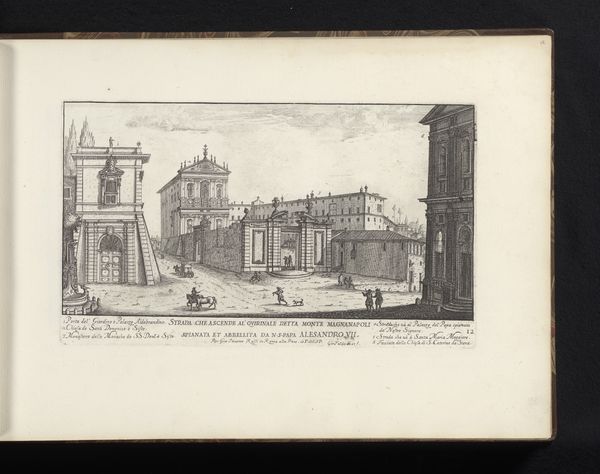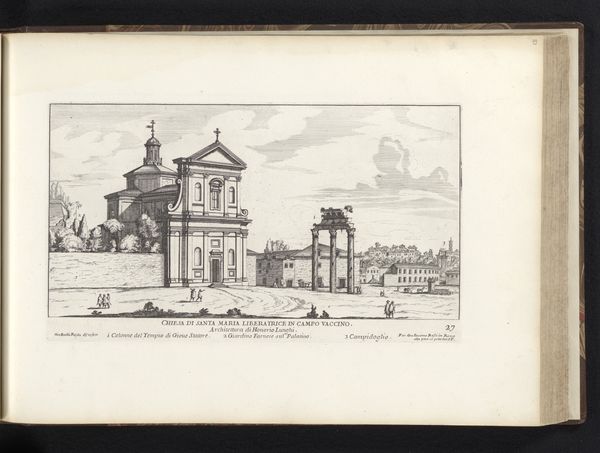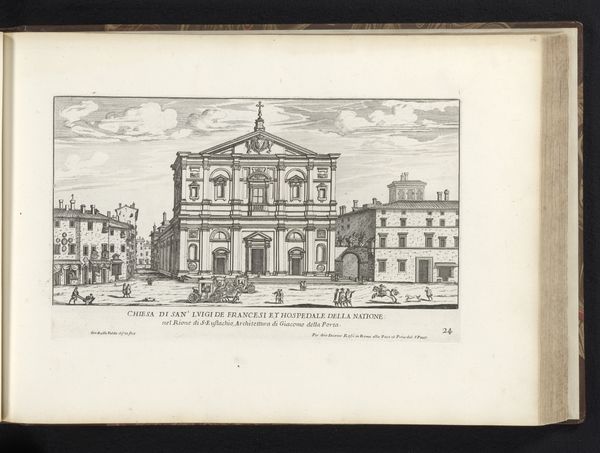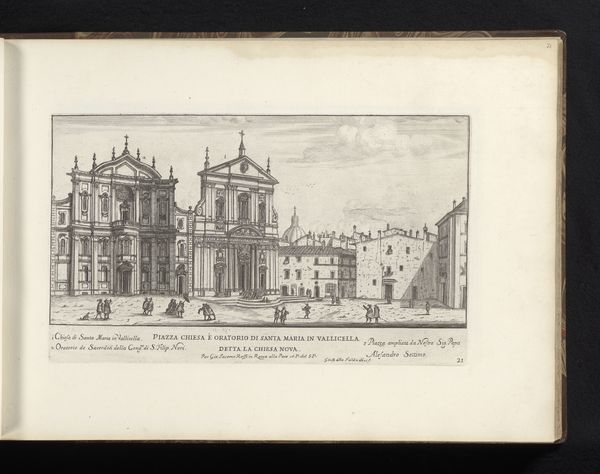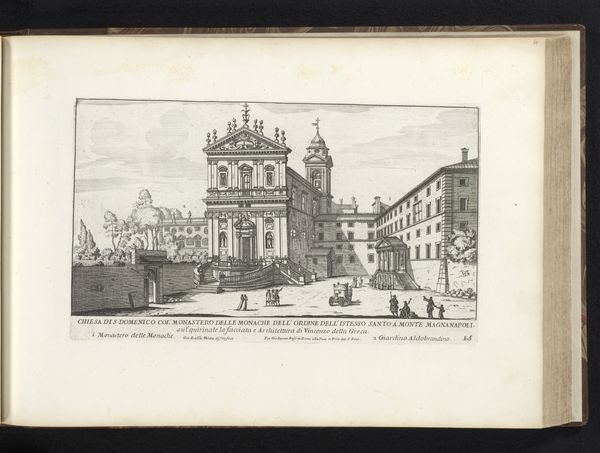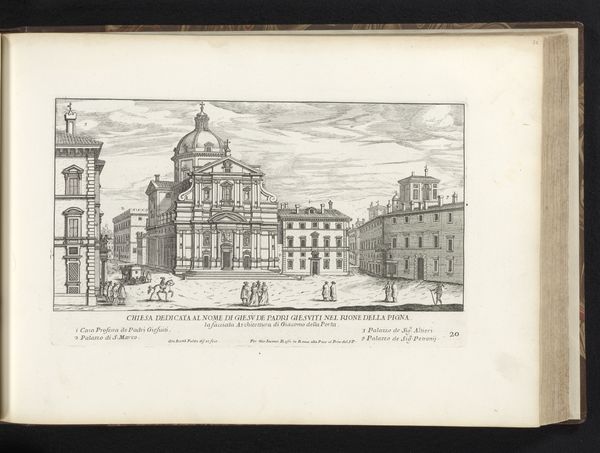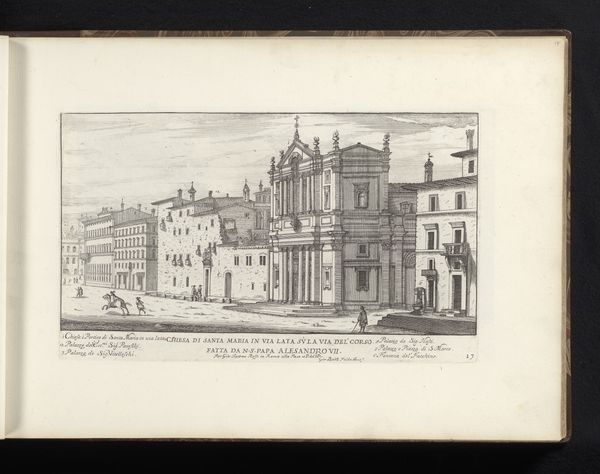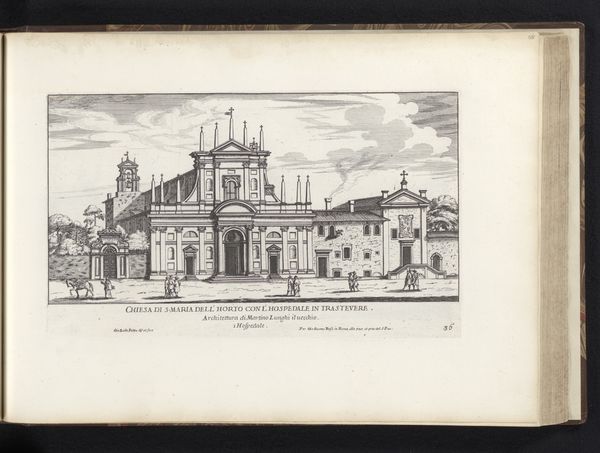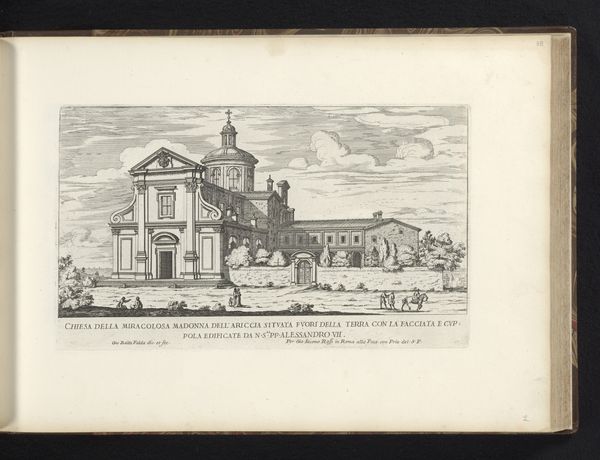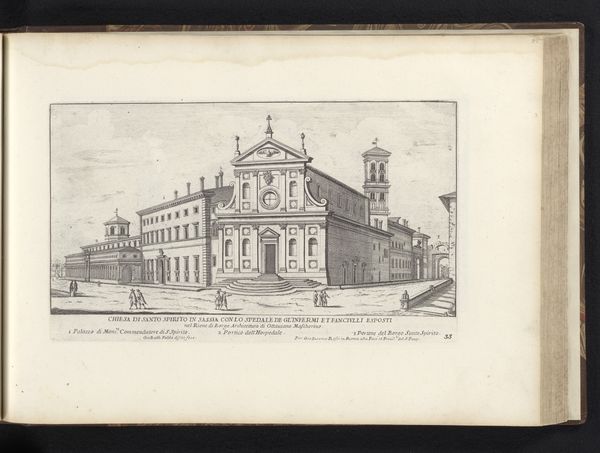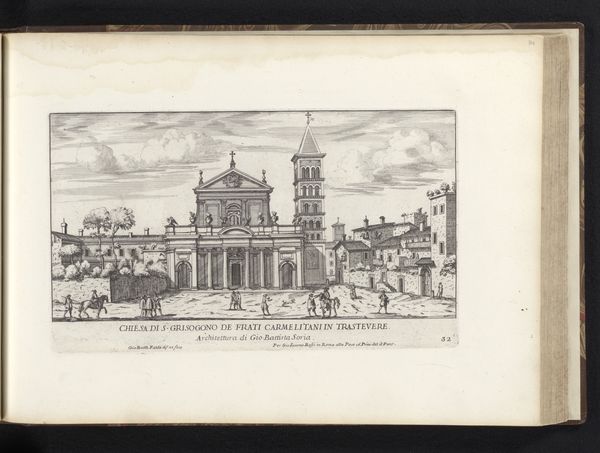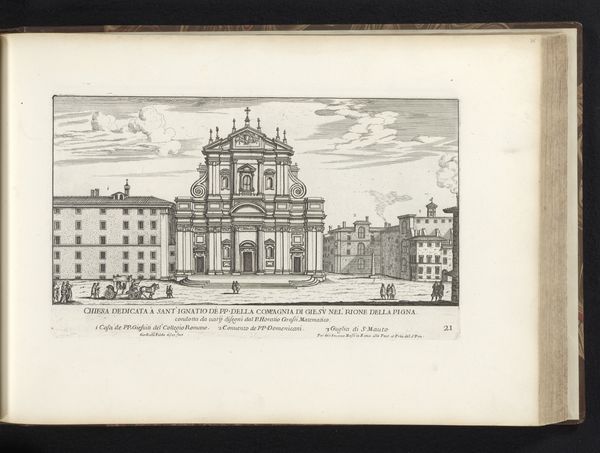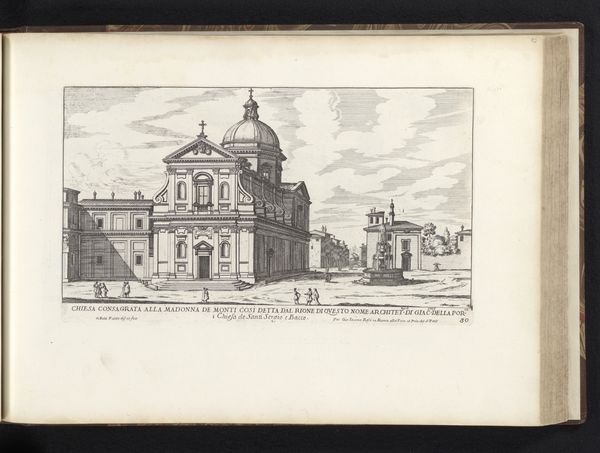
print, engraving
#
aged paper
#
toned paper
#
baroque
# print
#
old engraving style
#
sketch book
#
personal sketchbook
#
pen-ink sketch
#
pen and pencil
#
pen work
#
sketchbook drawing
#
cityscape
#
italian-renaissance
#
sketchbook art
#
engraving
Dimensions: height 168 mm, width 289 mm
Copyright: Rijks Museum: Open Domain
Curator: Look at this, would you? "Chiesa di Santa Caterina a Magnanapoli," a print made between 1669 and 1670 by Giovanni Battista Falda. It resides in the Rijksmuseum. Editor: Mmm, sepia whispers. The paper looks as old as the hills, giving the scene a hazy, nostalgic feel. I imagine the air smelling of old parchment and faint incense. Curator: You've hit upon the aging beautifully—note the 'aged paper' and 'toned paper'. The engraving presents the Santa Caterina church nestled within Rome's urban fabric. Observe the intricate linework; it’s an outstanding specimen of Baroque printmaking! Editor: The composition's got a theatrical, almost staged feel to it, wouldn’t you say? Everything seems perfectly placed for viewing; the buildings, even the tiny figures loitering around the plaza. Curator: Indeed. Falda excelled in architectural precision. Consider the rigorous balance between light and shadow that molds forms, and how geometric relations define spatial depth and structural stability. Look also how the engraver has skillfully conveyed three-dimensionality onto a flat surface, thus creating depth! Editor: I am strangely moved by how life—with all of its human imperfections—carries on just outside the monumental architecture... the artist allows daily human activities to become equal in significance with monumental architecture. Curator: Falda does seem to position humanity as integral to the landscape. Speaking of style, we find here qualities assigned to Italian Renaissance in its geometric clarity and idealized forms, contrasting the intricate ornamentation and dramatic dynamism typical of the broader Baroque movement. Editor: This image makes you realize just how different experiencing architecture can be through art versus real life! When in situ, the building commands your whole sensorium…while this piece, through the filter of an artist's interpretation, emphasizes specific qualities in it. It asks me to pause, really observe, and contemplate. Curator: Precisely. Falda allows us a focused appreciation. His formal decisions highlight core features in this enduring edifice, enabling critical introspection through a considered depiction! Editor: Well said. I'll walk away with a renewed excitement, and eagerness, to really scrutinize, when next viewing physical spaces.
Comments
No comments
Be the first to comment and join the conversation on the ultimate creative platform.
